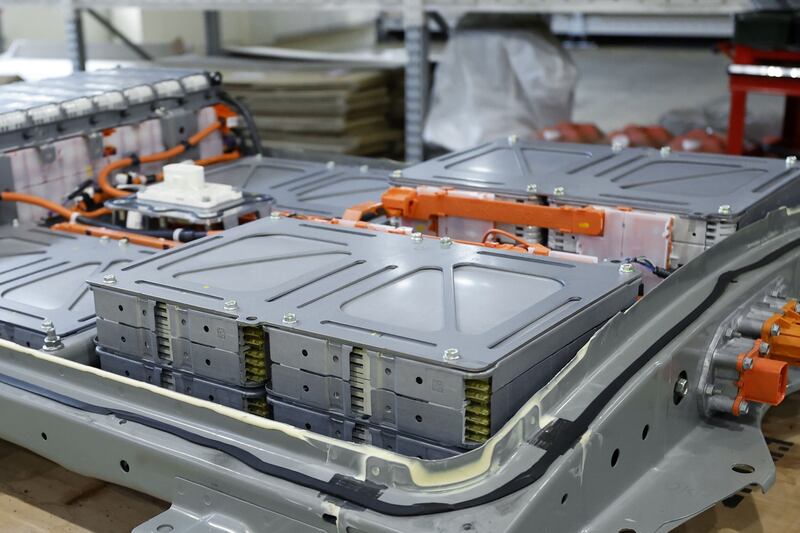In the shell of a factory that Nissan insists will be churning out solid-state batteries by 2028, an executive of the Japanese carmaker last week fired back at scepticism about the nascent technology from companies he says are clinging to the past.
“All the battery suppliers want to keep enjoying the liquid-type batteries, which they have now. They’ve already made a big investment so not only CATL, but all the battery suppliers are not so very positive on solid state yet,” said the executive on the sidelines of a tour.
He was responding to claims made recently by the founder and chief executive of CATL, the Chinese company that dominates the electric vehicle battery industry, that the much-hyped solid-state batteries did not work well enough, lacked durability and still had safety problems.
It is not a criticism that Japan’s carmakers take lightly. Toyota led the way in research into solid-state batteries – which avoid the need for liquid electrolytes used in today’s technology and promise more range and better safety for electric vehicles – and they could be the deus ex machina that transforms Japanese carmakers’ growth prospects.
READ MORE
That is why investors and legacy battery makers are watching, hawk-like, for signs that Japanese companies can make good on claims they will be able to commercialise the technology in the coming years. Toyota is aiming for as early as 2027, Nissan the year after and Honda by the end of the decade.
In response to questions about the CATL chief’s remarks, the Nissan executive claimed the group had cracked some of the critical elements of solid state, in the laboratory at least. He said the company had found new mechanisms that would help with ion transfer within the batteries, and minimise the problems of expansion of lithium during charging and discharging, which can reduce battery life, and provide greater safety.
Nissan has not gone into great detail about those mechanisms, which remain “top secret”, according to the executive, but said they had been largely solved in laboratory conditions. That would be a noteworthy milestone but getting the tech out on the roads will be the only test that truly matters.
Uncertainty about how exactly technology develops is entirely normal. The problem for Nissan is just how much it might need this breakthrough.
Although Japan’s carmakers can often be lumped together when discussing solid-state advances, they are not all in the same situation.
It is true that Toyota’s share price has risen along with hopes that it can crack the technology. But it also remains the world’s biggest carmaker by sales and is raking in record profits while taking advantage of renewed demand for its existing products, such as hybrids.

Nissan, meanwhile, is struggling, having fallen behind in the EV race and lacking the scale needed to compete globally. Just last week, on the heels of its solid-state factory tour, Nissan cut its full-year sales and operating profit forecasts, knocking its shares. The pain might have been worse had analysts not already factored in the risk of a miss to existing guidance – never a good look.
The company has responded to the pessimism, recently announcing a new midterm plan to boost sales and launch 30 new models, half of which will be electrified or hybrid. Nissan wants to forge new partnerships, after scaling back its alliance with France’s Renault, and is planning a tie-up with Honda to develop electric cars.
And at the same solid-state factory tour, Nissan also showcased how it would employ gigacasting – a manufacturing technique pioneered by Tesla that uses casting machines to force molten metal into moulds under high pressure to produce large aluminium body parts – to make cheaper electric vehicles. Nissan hopes those EVs are the same ones that will carry the next-generation batteries.
Investors, however, are still feeling a distinct lack of enthusiasm. “They just don’t move the needle ... If I want to take a view on Japanese carmakers, I am going for Toyota,” said one fund manager in Tokyo.
That could change if Nissan did manage to fulfil its solid-state ambitions but having so much of the narrative relying on that breakthrough seems risky. After all, no carmaker has yet managed to achieve mass production and Nissan’s solid-state factory remains home to hopes rather than actual machinery. – Copyright The Financial Times Limited 2024
















